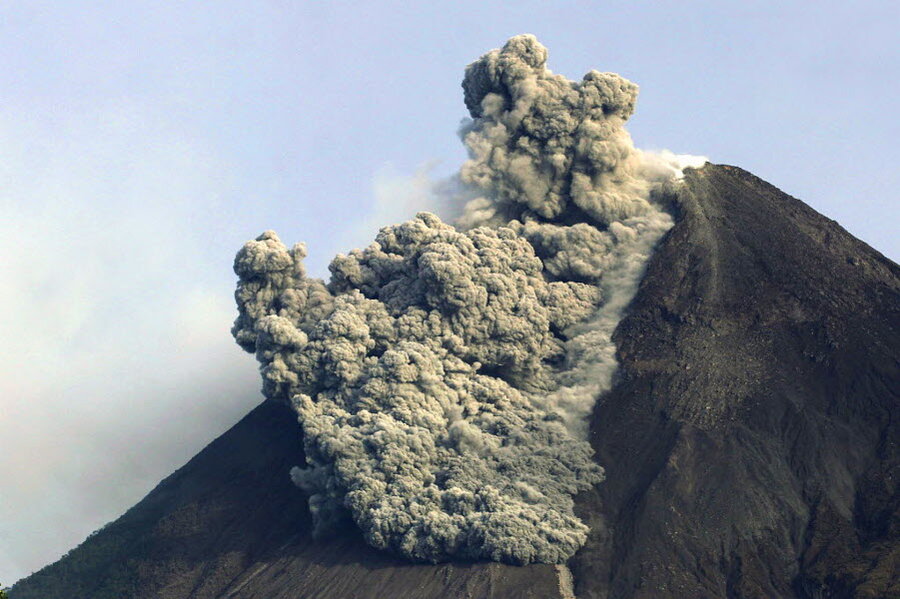Ancient supervolcanic flow was actually rather slow, scientists say
Loading...
Just how fast – or slow – were pyroclastic flows from ancient supervolcanoes?
A new study investigated the question, using the eruption of the Silver Creek caldera in the western United States, 18.8 million years ago. Researchers from the United States Geological Survey, the University at Buffalo, and France’s Blaise Pascal University published their findings online Monday, in the scientific journal Nature Communications on Monday.
In the Silver Creek eruption, pyroclastic flows – deadly rivers of gas, rocks, and ash, like the one that poured out of Mount Saint Helens in 1980 – destroyed huge swaths of present-day California, Nevada, and Arizona, but probably traveled at the comparatively slow pace of 10 to 45 miles per hour, say scientists.
“Intuitively, most of us would think that for the pyroclastic flow to go such an extreme distance, it would have to start off with a very high speed,” lead author Oliver Roche told the University at Buffalo Reporter, “But this isn’t consistent with what we found.”
Supervolcanoes are surprisingly common, says Dr. Roche, including several in the western United States alone. The most famous is the Yellowstone caldera, which last erupted 640,000 years ago.
The explosive eruption of the Silver Creek caldera, located near the junction of present day California, Nevada, and Arizona, left ash layers as much as 450 feet thick close to the volcano, and up to 10 feet thick 100 miles away.
According to the USGS, pyroclastic flow rates range from 50 miles per hour up to 450 mph. While the enormous scale of supervolcano eruptions might suggest faster flows, Roche and his colleagues argue that they were likely much slower.
To understand ancient volcanic eruptions, the researchers simulated the Silver Creek explosion through experiments and utilized data gathered in the 1980s from the eruption site. They found that the river of ash had been powerful enough to lift rocks off the ground and transport them long distances, a process geologists call "entraining."
“We did laboratory experiments on gas-particle flows aimed to simulate pyroclastic flows entraining particles from the substrate,” wrote Roche in an email to the Christian Science Monitor.
They used the size of the entrained rocks as well as the size of the boulders left behind to place upper and lower limits on the flow speed. Based on Roche’s model, the ancient pyroclastic flows traveled between 5 to 20 meters per second (10 to 45 mph).
“We want to understand these pyroclastic flows so we can do a good job of forecasting the behavior of these flows when a volcano erupts,” said co-author Greg Valentine of the University at Buffalo.
While modern cars could theoretically outpace a pyroclastic flow similar to the Silver Creek explosion, the best thing to do is evacuate as far ahead in advance as possible, said Dr. Valentine.
After all, pyroclastic flow temperatures often reach well over 1000 degrees Fahrenheit.
“The character and speed of the flows will affect how much time you might have to get out of the way," said Valentine, but "the only truly safe thing to do is to evacuate before a flow starts.”






